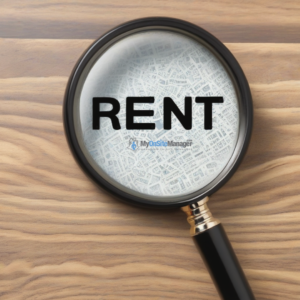Solo living has long been a symbol of independence, particularly in pop culture, where characters like Sex and the City’s Carrie Bradshaw glamorized having an apartment to oneself in a bustling city. However, in 2024, the reality is much different. With the rising cost of living and fluctuating incomes, renting a one-bedroom apartment on a single salary is becoming increasingly challenging in many American cities.
Recognizing this issue, The Economist introduced the Carrie Bradshaw Index, a tool that assesses where in America individuals can afford to live alone by comparing median local incomes to rental costs. This index offers a snapshot of the housing market’s accessibility and highlights regions where solo renters can stretch their income the furthest.
What Is the Carrie Bradshaw Index?
The Carrie Bradshaw Index (CBI) is a measurement that evaluates affordability by dividing the median salary of a full-time worker in a city by the estimated rental price of a basic one-bedroom apartment. A CBI score of 1.0 or higher means that an average worker in that city can afford to rent an apartment alone without financial strain. Anything below 1.0 suggests that housing is unaffordable for solo living without financial assistance or cost-cutting measures such as roommates.
The Most Affordable Cities for Solo Living in 2024
According to The Economist, the most affordable cities for individuals who want to live alone are primarily smaller, less densely populated metros where housing costs have remained relatively low compared to incomes.
Top 5 Most Affordable Cities for Solo Renters in 2024:
- Wichita, Kansas – CBI score: 1.72
- Akron, Ohio – CBI score: 1.7
- Baton Rouge, Louisiana – CBI score: 1.69
- Des Moines, Iowa – CBI score: 1.65
- Toledo, Ohio – CBI score: 1.62
These cities offer a relatively high median income compared to rental prices, making it feasible for residents to afford an apartment on a single salary.
For example, in Wichita, Kansas, the leading city in affordability, the average worker earns 1.72 times the amount needed to rent a one-bedroom apartment, leaving room for savings, discretionary spending, and financial stability.
The Least Affordable Cities for Solo Renters in 2024
On the flip side, many cities have seen rent prices outpace income growth, making solo living increasingly unattainable. Unsurprisingly, these cities are high-cost urban centers with limited rental supply, high demand, and competitive job markets.
Top 5 Least Affordable Cities for Solo Renters in 2024:
- New York City, NY – CBI score: 0.48
- San Francisco, CA – CBI score: 0.52
- Boston, MA – CBI score: 0.54
- Los Angeles, CA – CBI score: 0.56
- Miami, FL – CBI score: 0.58
A CBI score below 1.0 means that a single person earning a median salary cannot afford to live alone without sacrificing a significant portion of their income to rent.
For instance, in New York City, the CBI score of 0.48 means that a median-income worker earns less than half of what they would need to afford a basic one-bedroom apartment. This forces many residents to opt for roommates, co-living arrangements, or extended commutes to more affordable areas.
Why Is Solo Living Becoming More Expensive?
Several factors contribute to the growing unaffordability of solo living:
- Rent Inflation: Rental prices in many cities have continued to rise faster than wages.
- Housing Shortages: A limited supply of affordable housing increases demand, which in turn pushes prices higher.
- Cost of Living Increases: Essentials such as utilities, transportation, and groceries have also risen, making it harder to allocate income toward rent.
- Wage Stagnation in Some Areas: While salaries in tech-heavy cities like San Francisco have grown, wages in many other regions have failed to keep up with inflation.
How to Navigate the Affordability Challenge
For those struggling with the high costs of solo living, there are several strategies to consider:
- Relocate to a More Affordable City: The Carrie Bradshaw Index provides a useful guide for identifying regions where wages and rent are more balanced.
- Consider Remote Work: With more companies offering remote work opportunities, professionals may have the flexibility to live in a lower-cost city while working for a company based in a high-salary area.
- Seek Co-Living or Shared Housing Arrangements: Roommates remain a popular option in expensive cities to cut costs.
- Explore Subsidies or Assistance Programs: Some states and cities offer housing assistance, rental subsidies, or affordable housing programs to help mitigate high costs.
Final Thoughts
The Carrie Bradshaw Index provides a valuable lens through which we can evaluate the affordability of solo living in America. While some cities remain relatively affordable for single renters, major urban centers continue to be financially challenging for those without additional income sources or shared living arrangements.
As rental prices fluctuate and economic conditions shift, understanding where solo living is viable can help individuals make more informed choices about where to settle.
For a deeper dive into the Carrie Bradshaw Index, you can read The Economist’s full analysis here:
Our Carrie Bradshaw Index: Where Americans Can Afford to Live Solo in 2024

